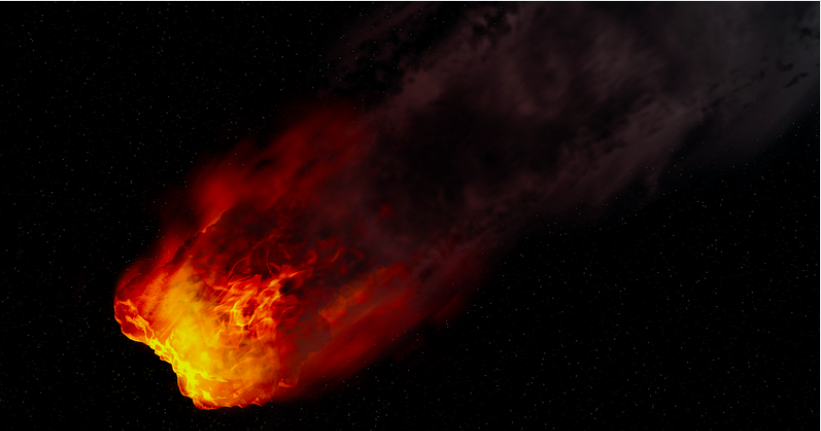Rare Meteorite That Hit Rajasthan Could Hold Clues to Origin of Life: GSI Scientists
Experts from the Meteorite and Planetary Science Division, Geological Survey of India studied the meteorite for over ten months. And the findings are quite intriguing.

The Panspermia hypothesis states that life on earth may have been brought from somewhere else in the universe. It suggests life exists throughout the universe in the form of small “living” particles and this accumulation of said particles is what brought life into this planet.
And there is a reasonable amount of evidence to support this hypothesis as well. On May 11, 2001, scientists from the University of Naples announced the discovery of extraterrestrial bacteria inside a meteorite, which was estimated to be more than 4.5 billion years old.
The researchers claimed that the bacteria wedged inside the crystal structure of minerals had been resurrected in a culture medium. They asserted that the bacteria had DNA unlike any on Earth and had survived the climatic endeavours of space.
The bacteria were analysed to be related to modern day Bacillus subtilis and Bacillus pumilus but appeared to be of a different strain altogether.
Adding to this evidence is the meteorite that had hit Mukundpura near Jaipur in Rajasthan on the morning of June 6, 2017, which created a six-feet-deep crater in agricultural land.
Experts from the Meteorite and Planetary Science Division, Geological Survey of India (GSI), which is the custodian of meteorites, studied the meteorite for over ten months. And the findings are quite intriguing.

A scientist at GSI told The Hindu, “The Mukundpura meteorite is a carbonaceous meteorite, one of the most primitive types. They contain grains of calcium and iron which date to a time before the sun came into existence. They may contain clues to the formation of early life.”
It is useful to remember that carbonaceous meteorites contain organic and carbon compounds, including water. And these are a very rare type of meteorite constituting about only 3-5% of overall meteorite falls.
G Vidyasar, Additional Director, GSI, told Hindustan Times, “The meteorite belongs to a very rare and primitive group of meteorites called CM group of carbonaceous chondrites. An estimated 44 tonnes of meteoritic material hit the earth every day, but less than 5% of these belong to this group.”
What makes the carbonaceous meteorite unique is that it contains very primitive traces of carbon, which we all know is the basis of a majority of life forms on earth.
Dwijesh Ray is a scientist with the Physical Research Laboratory in Ahmedabad who has also studied this rock from the space. He told the Hindustan Times, “This meteorite could be carrying some of the most pristine primordial matter recovered from space as it is made up of materials which were formed during the early stages of the formation of the solar system. A detailed analysis could provide clues about the origin of life and the formation and evolution of the solar system.”
The panspermia theory comes into play as these meteorites form a line of communication with other galaxies, bringing in composition and substance that would not be otherwise available on earth.
G Suresh, Deputy Director General of GSI told HT, “Their composition could be very close to that of Solar Nebula, from which the solar system is believed to have condensed. Hence, it can shed light on formation and evolution of stars and provide information about the age, composition and evolution of the solar system.”
These meteorites are space crafts from other galaxies, and research into their composition from organic substance to elemental composition could help answer the frequently-asked question, “Where did we come from?”
(Edited by Shruti Singhal)
Hey, you may also like: Ever Wondered How India Looks From Space? These 21 Stunning Photos Let You Find Out!
Like this story? Or have something to share?
Write to us: [email protected]
Connect with us on Facebook and Twitter.
NEW: Click here to get positive news on WhatsApp!
If you found our stories insightful, informative, or even just enjoyable, we invite you to consider making a voluntary payment to support the work we do at The Better India. Your contribution helps us continue producing quality content that educates, inspires, and drives positive change.
Choose one of the payment options below for your contribution-
By paying for the stories you value, you directly contribute to sustaining our efforts focused on making a difference in the world. Together, let’s ensure that impactful stories continue to be told and shared, enriching lives and communities alike.
Thank you for your support. Here are some frequently asked questions you might find helpful to know why you are contributing?


This story made me
-
97
-
121
-
89
-
167











